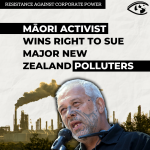The Global Impact of Tobacco
Regulations on the local, State, National, and International level have been enacted as evidence mounts on the dangers of smoking to smokers and nonsmokers alike. These regulations have, in large part, been initiated by local communities.
The Food and Drug Administration has issued rules that will go into effect in the next two years which will ban outdoor advertising near schools and playgrounds, ban tobacco promotional item sales or giveaways, reduce tobacco advertising in youth oriented publications to black and white text only, and prohibit tobacco sponsorship of events.
These rules are crucial as the tobacco industry turns towards 3,000 U.S. youth daily to fill the shoes of the 3 million US smokers who either quit or die.(1) The industry does this by putting its images everywhere so that they are pervasive, seductive, and familiar. In fact, each innovative tobacco marketing campaign since the 1890's has led to a major increase in the number of 14 to 17 years olds who become regular smokers.(2) It's no surprise that nearly nine out of ten adult smokers began smoking before the age of 18.(3)
The Tobacco Industry continues to be successful in its advertising strategies such that youth are twice as likely to be influenced to smoke by advertising and promotions than they are by peer pressure and family. In addition, the three most heavily advertised brands -- Camel, Marlboro, and Newport -- have 86% of the illegal teen market while having only 35% of the legal adult market. Moreover the Tobacco Industry buys silence and acceptance by funding cultural events such as the United Negro College Fund, the National Hispanic Scholarship Fund, the National Asian Pacific American Legal Consortium, and by underwriting events such as the National Civil Rights Museum Conference on Freedom.
The tobacco industry targets its product to specific communites as David Goerlitz, a former Winston man for RJ Reynolds found out. At an outdoor photo session that had cartons of Winston lying about Goerlitz asked one of the Reynolds eexcutives who were at the shoot if he could take a carton. One of the executives said to take them all. Surprised, Goerlitz asked, "Don't any of you smoke?" The excutive shook his head and said, "Are you kidding? We reserve that right for the poor, the young, the black, and the stupid."(4)
While promoting its product here and abroad and testifying before Congress that nicotine is not addictive, the tobacco industry owns life insurance companies that give premium discounts to non-smokers. In testimony during a class action lawsuit in Miami in 1993, chairman and chief executive of Lorillard Tobacco, the makers of Newport, Andrew Tisch stated that he did not believe it was true that smoking caused lung cancer, heart disease, and emphysema. When asked whether he would prefer that his children not smoke at eighteen or if he was entirely neutral on the subject, he stated that he "would prefer that they not smoke".(4)
The tobacco industry's international marketing techniques are legendary. They sponsor rock concerts, teen dances, hire young boys to sell cigarettes to passing motorists, and saturate the airwaves and billboards. The industry is also very capable of circumventing legislation aimed at reducing advertising. When Thailand banned cigarette ads, ads for Kent cigarettes disappeared to be replaced with ads promoting a new company for "Kent Leisure Holidays". In Hong Kong a new clothing line "Salem Attitude" and a new music promotion "Marlboro Red Hot Hits" grew out of a advertising ban. In Bucharest, RJ Reynolds made a deal to provide the cash strapped government with traffic light bulbs for one year. In exchange, the yellow lights would bear the silouhette of the "Camel" cigarette logo.(5)
Here in the US, the industry is planning to answer the FDA ban with direct-mail campaigns and marketing electronically through the Internet. This is already being done in Europe where Camel brand sponsors a Web site called the Silver Page which includes notices about "rave" parties where cigarettes are distributed for free.(6)
Sources:
1. "Trends in Smoking in the United States: Projections to the Year 2000", Pierce, J.,Ph.D, et al., Journal of the American Medical Association, 3154-3158, No. 266, 1989
2. "Historical Analysis of Tobacco Marketing and the Uptake of Smoking by Youth in the United States: 1890-1977", Pierce, J. Gilpin, E., Health Psychology, 500-508, Vol 14. No.6, 1995
3. "Trends in Smoking in the United States: Projections to the Year 2000", Pierce, J.,Ph.D, et al., Journal of the American Medical Association, 3154-3158, No. 266, 1989
4. Morbidity and Mortality Report, 8/19/94
5. "Tobacco Hush Money for Black Leaders", Herbert, B., Business and Social Review, 62-63, Winter 1994
6. "The Race around the FDA: How Cigarette Companies Aim to Bypass New Federal Regs on Promotions and Ads", Greising, D., Business Week, 38-40, 9/9/96
- 109 Tobacco



